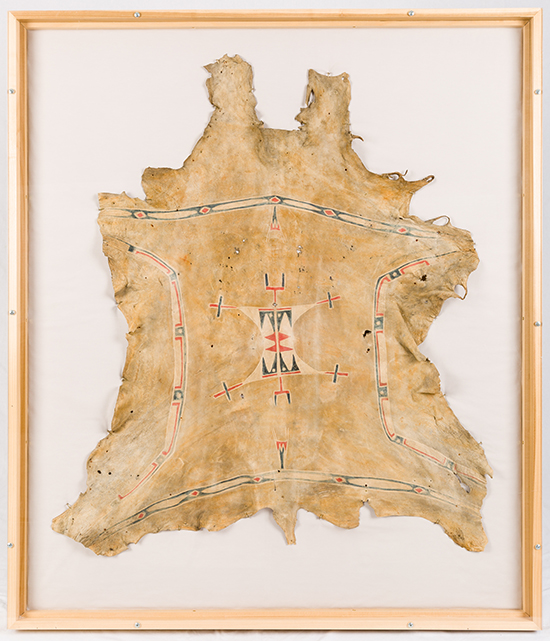Comanche Deer Hide Robe

This Comanche deer hide robe is from the mid-1800s and would have been worn by a young girl. Robes like this one were worn as a coat and used as an additional layer in cooler weather. In winter, heavier hides with the animal hair still attached would have been used to provide additional warmth. Although buffalo hide robes are the most common, people wore deer hides, like this one, because they were more comfortable and pliable for everyday clothing.
Hide painting was a widespread art form across the Great Plains. On hide robes like this one, the painting was displayed across the wearer’s back. The most popular colors in these paintings were red and black, as shown here. This geometric design is a recognized pattern called Border and Hourglass. It was a popular motif in the southwest Plains region, especially among the Comanche, and can be associated with curing or healing ceremonies. Geometric designs were traditionally painted by women, while men painted representational ones. On this hide, the hourglass in the center is in the form of a stylized animal. This type of image is the closest representation of a living thing found in geometric designs. Holes from the pegs used to stretch the hide before painting are visible in the upper right side of the robe.
Hide robes like this one are especially significant because there are very few such robes in existence, and examples of Comanche clothing in museum collections east of the Mississippi are quite rare.
Learn about other Native American objects from the Great Plains with our virtual exhibit At Home on the Plains.

